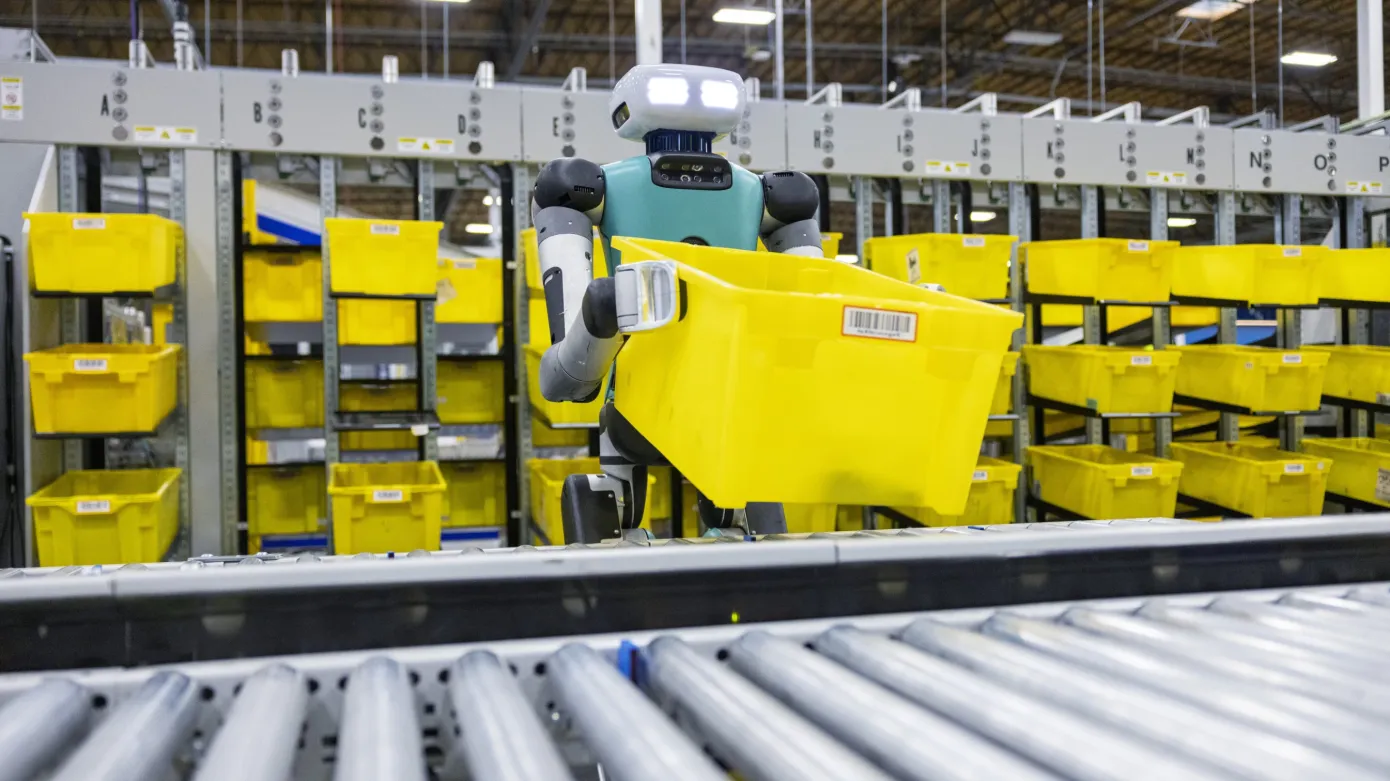Amazon is testing humanoid robots in its warehouses in the United States, the most recent indication that the technology giant is automating increasing processes.
Amazon stated that the decision was made to “free up employees to deliver better for our customers.”
It stated that it was conducting tests on a new automaton named Digit, which possesses limbs and legs and can grasp, move, and manipulate objects similarly to humans.
According to a labor union, Amazon has “treated their employees like robots for years.”
“[Amazon’s] automation is a race against time to eliminate jobs.” According to Stuart Richards, an organizer for the U.K. trade union GMB, hundreds of positions have already been lost to it in fulfillment centers.
Amazon acknowledged that its automation systems had contributed to creating “hundreds of thousands of new jobs” within the company’s operations at the time of the announcement.
The firm stated, “This includes 700 categories of new job types, all of which are skilled positions that did not previously exist within the organization.”
The technology conglomerate claims it employs over 750,000 robots “collaboratively” with its human workforce, performing “extremely repetitive tasks” regularly.
Tye Brady, the chief technologist of Amazon Robotics, stated at a media briefing in Seattle that personnel was “irreplaceable” and refuted the notion that the organization might eventually have entirely automated warehouses.
“No aspect of myself believes that could ever become a reality,” he declared.
“People are so fundamental to the process of fulfillment; their capacity for higher-order thinking and problem-solving are indispensable.”
Legs, not wheels
When not propelled by wheels, Digit can walk on two legs. Arms capable of lifting and transporting containers, parcels, customer orders, and other objects are also included.
According to Amazon Robotics’ Scott Dresser, this informed the media and enabled the robot to “manage stairs and steps, as well as areas within our facility where we must ascend and descend.”
However, according to him, the trial was to determine whether the prototype robot could operate securely alongside human employees.
“We are conducting this experiment to gain insight into how mobile robots and manipulators can be utilized in the Amazon environment,” he explained.
Mr. Dresser opined that the concerns regarding replacing human labor must be commensurate with the situation at Amazon.
“Based on our experience, these new technologies generate employment and facilitate our growth and expansion.” And numerous instances of this have been observed in the automata of the present day.
“Unfortunately, they do not always operate, and we require personnel to repair them,” he explained.
In recent years, Amazon has increased its use of robotics in response to mounting cost-cutting pressure. It announced it was testing a gigantic robotic arm capable of picking up heavy objects last year. It utilizes motorized machines to transport products throughout its facilities and has begun using drones for delivery in two U.S. states.
